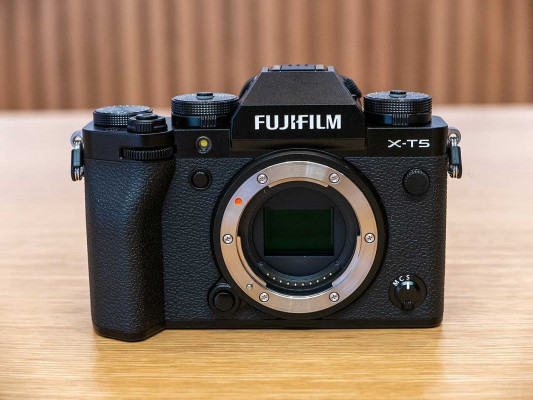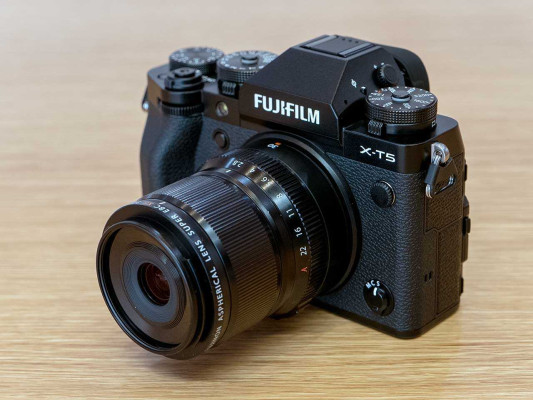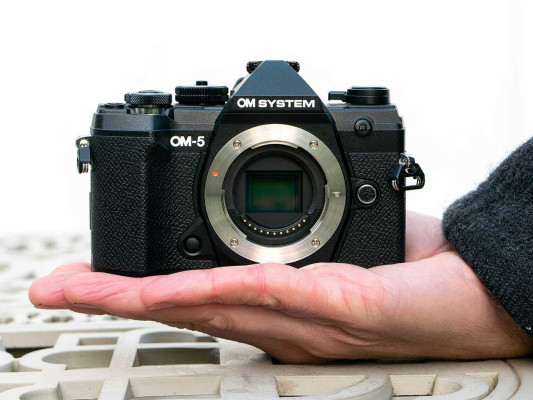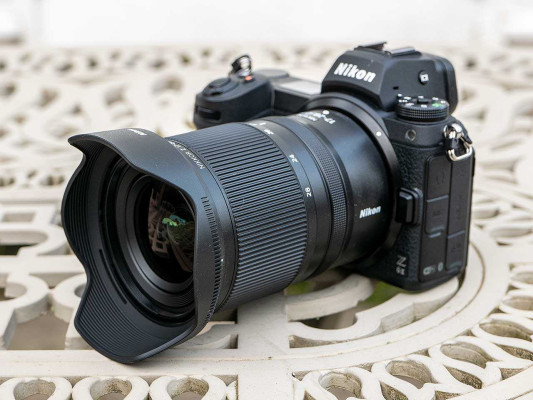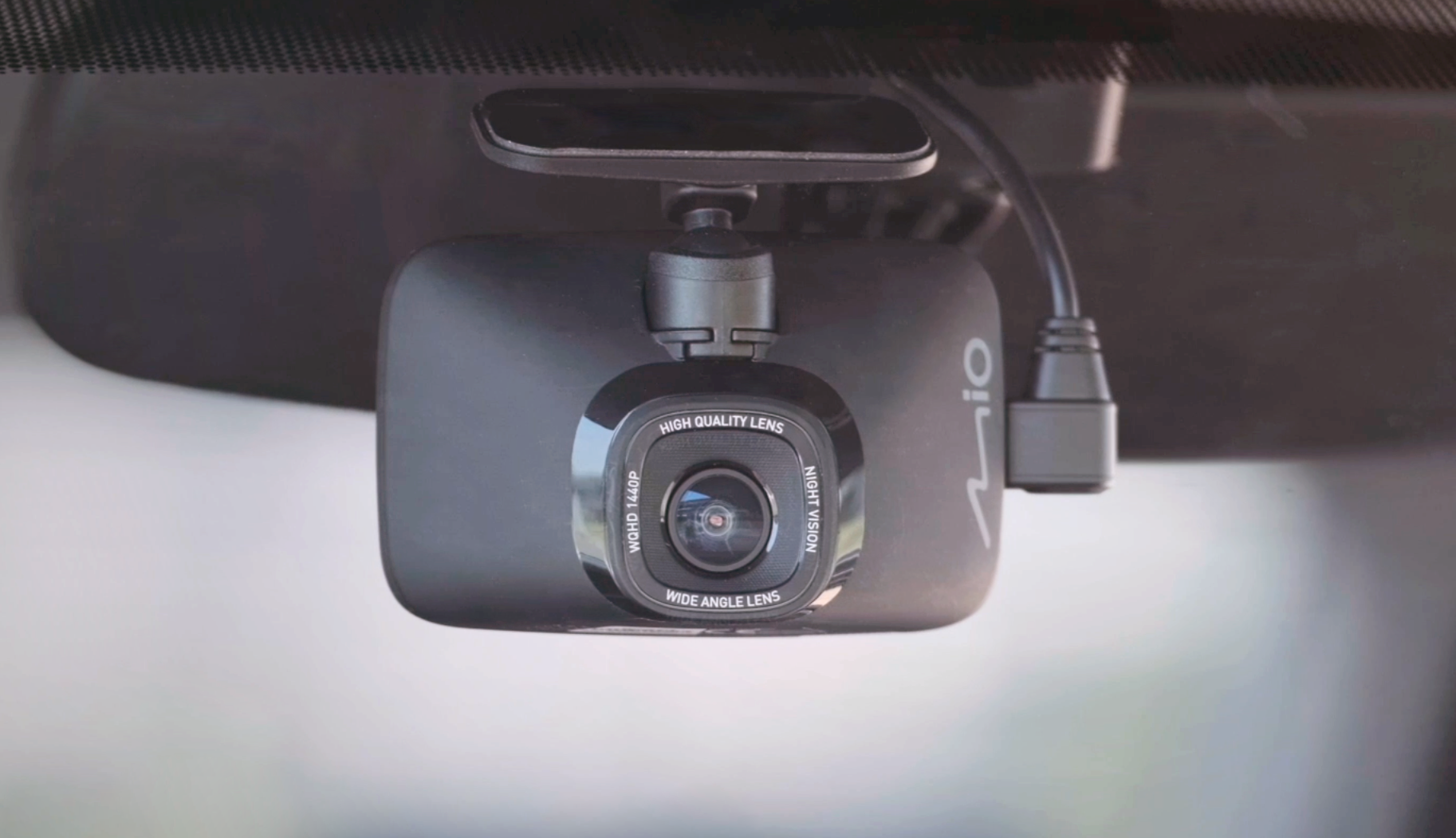Reviews

Skydio 2 Drone review
DPReview LatestIntroduction
 |
The Skydio 2+ is an update arriving three years after its predecessor, the Skydio 2, was introduced in late 2019. This time around, the manufacturer focused on improving the battery life and increasing range, and has also released a new handheld tracking Beacon. You can operate the Skydio 2+ manually or let the drone loose to perform a variety of autonomous maneuvers.
The 2+ also aims to appeal to more ambitious filmmakers with Keyframe, a feature that allows users to create predetermined flight paths using, you guessed it, keyframes along with waypoints.
If you're someone who's interested in capturing imagery from an aerial perspective without needing to master remote piloting skills, is the Skydio 2+ for you? Does the technology that gives it 360º obstacle avoidance make it a worthy alternative to other drones in its class? Will its combination of features appeal to the adventurer or casual consumer seeking out a different solution? Let’s explore.
Jump to:
Aircraft| Photos and video| Flight Modes | What it's like to fly | Conclusion | Samples
Key Features
- 12.3MP Type 1/2.3 (6.3 x 4.7mm) CMOS sensor
- 20mm lens with fixed F2.8 aperture
- 13.5 stops of dynamic range
- 4K/60p HDR video
- 8-bit recording
- H.264 and H.265 recording at 100Mbps
- Six 4K visual sensors for 360º obstacle avoidance
- Can track and follow subjects from the front, sides and behind
- 36 mph top speed
- Raw and JPEG image capture
- 3km (1.9 mi.) range with handheld Beacon remote
- 6km (3.7 mi.) range with Skydio Controller
- ‘Keyframes’ cinematic flight-plan mode
- 27-minute flight time
- 775g (1.7lb) total weight
| What We Like | What We Don't |
|---|---|
|
|
Compared to...
Skydio’s 2+ can fly up to 27 minutes. That’s 4 minutes longer than its predecessor, the Skydio 2, and 4 minutes shorter than DJI's competing Air 2S. It tops the Air 2S in obstacle avoidance, with the Air2S lacking sensors on the sides, which potentially opens it up to collisions if tracking subjects from certain angles. However, the Air 2S does possess a superior camera with a 20MP Type 1 sensor along with 10-bit color and a D-log profile.
| Skydio 2+ | DJI Air 2S | |
|---|---|---|
| Price |
Starter Kit: $1,099, |
Basic: $999, |
| Camera |
12.3MP Type 1/2.3 (6.3 x 4.7mm) sensor 20mm equiv. F2.8 (fixed) |
20MP Type 1 (13.2 x 8.8mm) sensor 22mm equiv. F2.8 (fixed) |
| Zoom | None | 1-4X digital zoom |
| Range | Up to 3 km (1.9 mi.) with Beacon, 6 km (3.7 mi.) with Remote Controller | Up to 12 km (7.5 mi.) |
| Video resolution | 4K/60p | 5.4K/30p, 4K/60p |
| Video bit-rate | 100 Mbps | 150 Mbps |
| Log video | 8-bit | 10-bit D-Log-M, HDR video (10-bit) |
| Tracks objects | Vehicles and people from all directions | APAS acts as a 'Follow Me' mode for pets, people and vehicles |
| Obstacle avoidance sensors |
Omnidirectional and above/below Super fisheye lenses for 360° view |
Forward, Backward, Downward, Upward |
| Flight time | 27 minutes | 31 minutes |
| Dimensions | 229×174×126 mm | 180×97×77 mm |
| Fold down? | No | Yes |
| Weight | 775g | 595g |
Aircraft and controller
At 229×174×126 mm (9×6.9×5"), the Skydio 2+ has a relatively compact frame that fits nicely in the included carrying case. That being said, the legs don’t fold down and said case doesn’t fit more than 2 batteries; the Skydio remote controller needs to be carried separately. The DJI Air 2S or Mini 3 Pro, in comparison, come with bags that can easily carry up to 3 extra batteries plus the remote.
 |
| The Skydio 2+ comes with a case that comes in handy for landing the drone, as well. It does not, however, fit either the Beacon or remote controller. |
Anyone upgrading from a Skydio 2 will be able to use their 4280mAh (49Wh) batteries, which will power the drone up to 23 minutes. However, you’ll probably want the extra 4 minutes from the 5410mAh (62Wh) battery designed for the 2+. These batteries are magnetic and snap into the bottom of the aircraft. While this felt a little off-putting at first, the battery proved to be extremely secure once it snaps into place.
The top of the aircraft sports two omnidirectional antennas that give it twice the range of the original Skydio 2. The body is equipped with six color navigational cameras that each provide a 200º fisheye FOV and give the drone complete 360º obstacle detection abilities, powered by NVIDIA’s Tegra X2 chip with a 256-core NVIDIA Pascal GPU. In layman’s terms, this means it has the processing power of a sophisticated tablet for its onboard flight system.
If you want, you can control the Skydio 2+ with your iOS or Android smartphone. For those who don’t want to fly manually or be weighed down by a remote control, the compact and handheld Skydio 2+ Beacon is the ideal accessory for operating the aircraft. If you’re committed to using the ‘follow-me’ mode for creating content with the Skydio 2+, the Beacon is all you need.
 |
| Featuring a monochrome display and a few simple buttons, the Beacon extends the range of your smartphone, when using the Skydio app, up to 3km. |
The oblong-shaped Beacon has its own GPS signal and can extend the range between your phone, running the Skydio app, and the drone by a manufacturer-rated 3 km (1.85 mi). The Beacon's square screen with a monochrome text display takes up the top section while a power button plus a few customizable dials allow you to position the drone to follow you from the front, back or sides, angle the gimbal, and switch to an autonomous flight mode.
Anyone who has operated a Parrot ANAFI drone will recognize the full remote control. The Skydio 2 series uses the exact same design. The only difference is that Skydio covered up the USB-A port so everything can run through a USB-C slot. The remote automatically turns on and off when the front panel opens and closes.
 |
Once open, you can wedge your smartphone into the holder. I had quite a bit of difficulty getting my iPhone 12 Pro Max to squeeze inside and ended up having to remove my phone case to get it to fit comfortably. Instead of wheels on top to control the gimbal’s pitch or zoom capabilities, there are paddles. I actually enjoyed this element as it makes fluid drone movements easier to accomplish.
On the downside, the sticks are a bit short – they’re almost knob-like. There is a launch button and Return to Home button on the front, while Shutter and Boost buttons can be found on top in front of the paddles. I would have thought Skydio could design something a bit more sophisticated than this basic controller, but it's clear that autonomous flight rather than manual control is the main focus with this drone.
Photos and video
The Skydio 2+ boasts the same type of camera that can be found on a smartphone or DJI Mini 2 drone. A 12.3MP Type 1/2.3 (6.3 x 4.7mm) CMOS sensor behind a 20mm lens with a fixed F2.8 aperture is mounted on a 3-axis gimbal. This is a bit disappointing, as one would think that Skydio would want the same caliber of sophisticated tech that powers its on board computing system. The small sensor just isn't up to snuff when it comes to image quality.
 |
The camera can capture both RAW and JPEG imagery and up to 4K/60p video at 100 Mbps with either an H.264 or H.265 codec. When in HD, video can be recorded at a rate of up to 120p for slow motion footage. I noticed that white balance isn’t always quite as accurate as one would wish and that processing renders surfaces like grass with a strange shiny look.
While Skydio claims the camera has 13 stops of dynamic range, video only records with 8-bit color depth and there isn’t any Log support, which might be annoying to those who like to get every bit of detail from their footage. The DJI Air 2S, in comparison, supports 10-bit capture and has the ability to record Log footage.
The Skydio app and flight modes
The Skydio 2+ relies on the aptly-named Skydio app for control. Navigating features in the app is a bit of a different experience compared to Autel's or DJI’s offerings. Whereas the pared-down DJI Fly app makes most settings you need accessible on the right-hand-side of the interface, the Skydio app has menu items on the top, bottom and in between. Adjusting camera settings or selecting certain ‘Skills’ brings information front and center as needed.
 |
| The Skydio app allows you to select which person or vehicle you want the drone to follow. |
In the camera settings you can manually adjust the white balance, ISO, shutter speed and exposure compensation by pushing sliders up and down with your finger. Because the Skydio 2+ relies mostly on autonomy and less on manual flight, it boasts a bevy of so-called Skills that are organized into four categories: General, Cinematic, One Shot, and Specialty. Using these, the camera can track either people or automobiles.
The Skills section is where the Keyframe feature can be found as well. It doesn't look like you can save any Keyframe missions, should you want to go back to a location and replicate your flight, which might make reshoots a bit of a hassle. No matter which autonomous mode you choose, Skydio has designed the app to visually display what’s happening at any specific interval while the drone is in flight. Therefore, even if it leaves your line of sight, you’re aware of its orientation and where it’s headed.
What's it like to fly?
For anyone accustomed to DJI, Autel or other types of drones that are primarily operated manually, the Skydio 2+ will present a bit of a learning curve. On my first launch, using the the Skydio 2+ Beacon, I accidentally sent it directly toward a tree. However, it maneuvered itself around it and didn’t so much as collide with a tiny twig.
With the Skydio 2+, you’re not really flying so much as planning the cinematic shots you want to capture.
Once I became more familiarized with the app and different settings, I felt more at ease operating the drone. I’m just used to having more control – you need to learn to trust the tech and let the Skydio 2+ do its thing. Sometimes, when I was having it follow my car, the drone lurched so quickly while trying to stay in position that I was afraid of a potential collision – but that never happened. It is, however, really loud.
Once you do get comfortable, it’s hard to think of another drone that is more capable of avoiding objects or tracking subjects. DJI drones can do some of the same maneuvers but they can’t film you autonomously from the front. DJI drones, in general, tend to slow down when in close proximity to obstacles, even when they are bypassing them.
With the Skydio 2+, you’re not really flying so much as planning the cinematic shots you want to capture. You use the Beacon, Skydio Controller, or your phone to maintain a connection with the drone, so you're free to watch what it’s recording on its flight if you want, no constant maneuvering required. Skydio knows this is a departure from traditional drone flight and they’ve created a very helpful resource for getting up and running with their Skydio Flight School.
Another thing to note is that when you record video, there is no start or stop recording button. As soon as you switch from photo mode to video, it starts recording. This means you may end up with a long clip that needs to be trimmed down.
It's worth reporting that I had one incident where, in mid-flight, the app asked me to change my password. I could not get out of the locked screen and had to find a way to land the drone as it would not do so on its own. This was a bit frustrating for me and acted as a warning to not use the smartphone only when operating the 2+.
While Skydio says the you get a 183-meter (600-plus-foot) range when operating from your smartphone, in my experience the drone lost connection and automatically began to return to home when I had it roughly 43 meters (140 feet) above me. I think you will, at the very least, need a Beacon to effectively operate Skydio 2+.
Odds and ends
The Skydio 2+ Beacon extends the range of your phone up to 3 km (1.9 miles), even when the drone can’t see you, while the Controller offers connectivity up to 6 km (3.7 mi.). In ideal conditions, it can fly up to 27 minutes at a maximum speed of 56 kph (36 mph). While this is an improvement compared to its predecessor, most other models in its class can operate for at least 4 extra minutes.
Memory cards up to 256GB storage can be inserted in a small slot at the base where the battery clamps in. There isn’t any internal storage onboard, so you’ll need to remember your memory card or be satisfied with the footage you can pull off your smartphone in the app.
Be aware that the Skydio 2+ is very particular when it comes to which type of microSD memory card it likes. A U3 (Class 3) card that records at a write speed of 30MB/s is required for filming. If you insert a Class 10, which only guarantees 10MB/s sustained write, the drone simply won’t take off.
 |
| The memory card fits in a slot right where you insert a battery. |
You can access and modify the drone’s return-to-home feature on the Controller and also through the Skydio app. Let’s say, for example, you’re filming yourself riding a motorbike and want to designate a different RTH location from where you took off. There’s a way to pinpoint a new landing spot in the app.
Speaking of the remote, Skydio uses a proprietary USB-C to iPhone or Android cord to link up. You can't simply use any other cord lying around interchangeably as you can with DJI or Autel drones. This, and a replacement propeller I needed, could only be ordered through Skydio's online store. I was unable to find these parts on any other retail site.
Who's it for?
The Skydio 2+ is geared toward people who desire an aerial perspective but don’t want to pilot the drone or spend a lot of time learning how to create smooth, professional-looking footage. That being said, with a 12.3MP Type 1/2.3 sensor, and a lack of 10-bit recording abilities or log profile, the camera isn’t really well-suited for high-end photography or videography.
The Skydio 2+ also can’t be flown at night or in dark conditions. The company furthermore discourages users from flying over water or any reflective surfaces as this can mess with the navigational system and cause the drone to automatically land.
If any of the six navigational cameras get scratched or damaged, that can negatively impact the drone’s overall performance. This is why Skydio has created both soft and hard shell carrying cases and recommends that you both transport the drone in them and launch and land from the closed case to avoid scratching or damaging any of the nav camera surfaces.
 |
| The Keyframe feature shows you your pre-set flight path. |
While the Skydio 2+ has some really cool features including Keyframe, and can track subjects from a multitude of angles and follow a subject at top speeds, it is unfortunately limited in crucial areas including the camera and in the conditions where it can be safely operated. Overall, it likely won’t appeal to serious professional photographers or those who enjoy operating over lakes and oceans.
A drone newbie or social media maven who doesn’t want to take the time to learn how to pilot a drone would likely benefit most from what the Skydio 2+ has to offer. $1,099 for a Starter Pack is practically half the price of the original Skydio R1 and not outrageous for what it has to offer.
Conclusion
Skydio got its initial break as part of NVIDIA’s startup accelerator program. So it makes sense that they took advantage of the GPU maker's sophisticated technology and incorporated it into their drones for superior tracking and obstacle avoidance capabilities. Skydio 2+ excels in tracking cars, motorcycles and people from all directions, including the front (which is not found on other drones) and in bypassing obstacles without slowing down.
It’s just a shame the camera isn’t up to par. For some this will be a minor inconvenience, but it’s also worth mentioning that you'll need to transport the Controller and/or Beacon separately since the drone's case fits only the drone and two batteries. That being said, the Beacon accessory is very compact, and for the user wanting to film themselves riding a bike, for example, it makes this feat doable.
The drone seems geared most to adventurous types looking to shoot neat footage to upload to social media. It could potentially have industrial applications; otherwise, I'm not sure that it would appeal to a professional cinematographer or professional remote pilot – especially since it can't be flown at night or over bodies of water.
If Skydio can add, at the very minimum, a 20MP Type 1 (13.2 x 8.8mm) sensor and include 10-bit recording, then the Skydio 2+ would have broader appeal to amateur pilots hungry for high image quality.
![]()
Sample gallery
Please do not reproduce any of these images without prior permission (see our copyright page).

